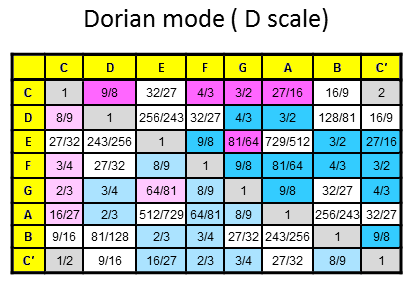
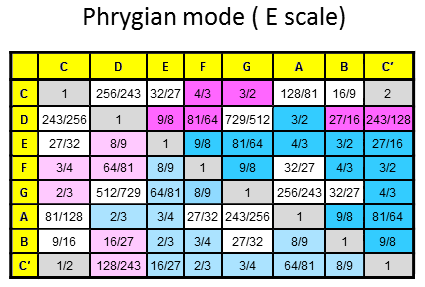
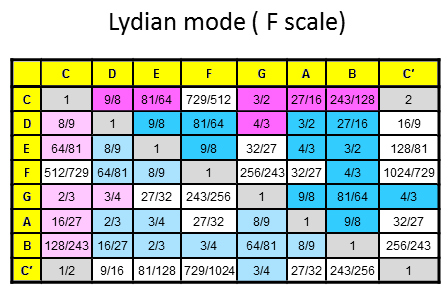
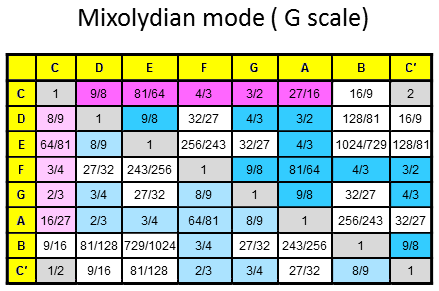
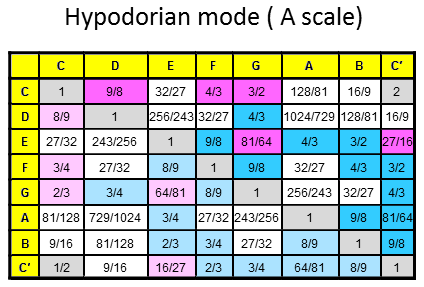
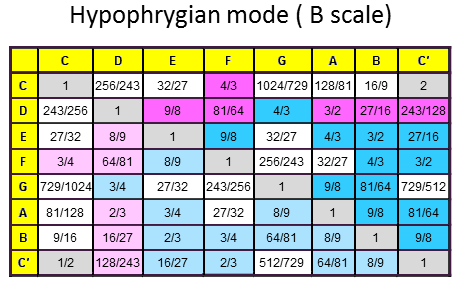
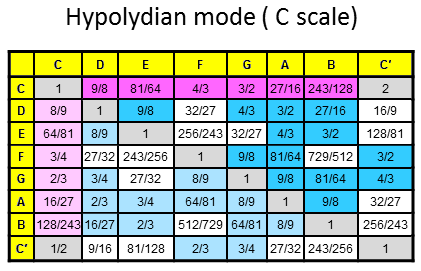
Total =
66
| << Previous 1... 41 42 [43] 44 45 Next >> |
The 84 repeated, Pythagorean intervals between the notes in the seven diatonic scales
Tabulated below are the numbers of rising intervals (Pythagorean/C scale & non-Pythagorean) between the eight notes C-C′ in each of the seven diatonic scales:
| Church musical mode | Number of non-Pythagorean intervals (white cells) | Number of Pythagorean intervals (dark red & blue cells) | Number of repeated, Pythagorean intervals (dark blue cells) |
|
|
10 | 17 | 12 |
|
|
8 | 19 | 13 |
|
|
9 | 18 | 12 |
|
|
11 | 16 | 11 |
|
|
11 | 16 | 11 |
|
|
9 | 18 | 12 |
|
|
8 | 19 | 13 |
|
Total = |
66 |
123 | 84 |
Comments
1. The lowest Tree of Life with its 19 triangles turned into tetractyses has 48 yods up to Chesed, the first Sephirah of Construction, and 36 more yods up to its top, including four yods outside it;
2. The 2nd-order tetractys, the Pythagorean representation of holistic systems, has 84 yods surrounding its centre, of which 48 hexagonal yods belong to the seven 1st-order tetractyses that express the seven Sephiroth of Construction, leaving 36 yods (15 corners of the 10 1st-order tetractyses & 21 hexagonal yods in the 1st-order tetractyses at the three corners of the 2nd-order tetractys):
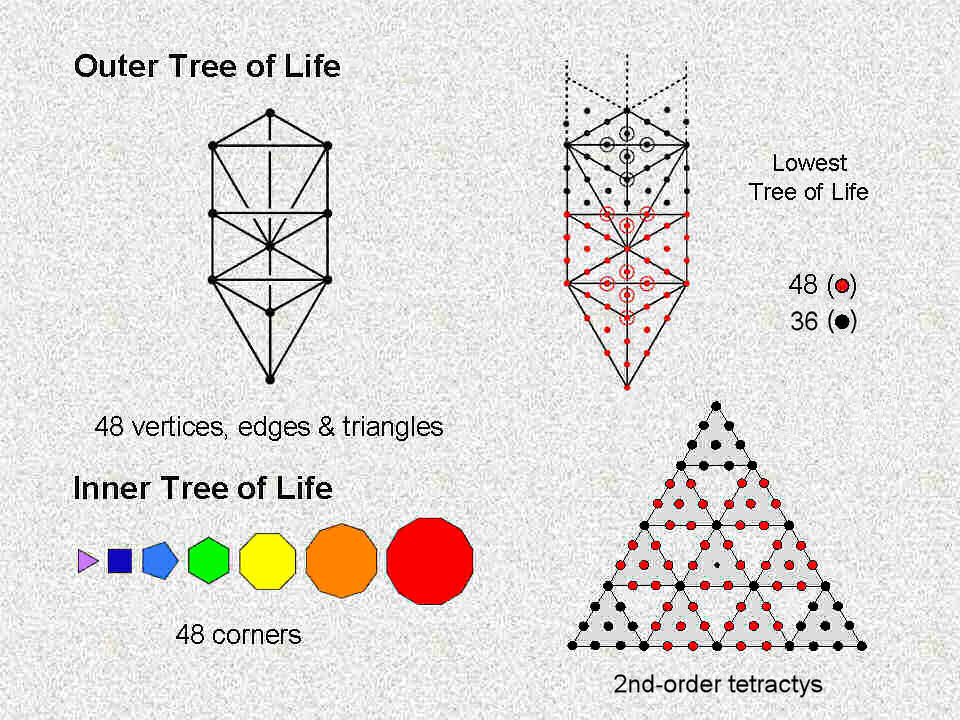
Alternatively, 36 yods line the boundary of the 2nd-order tetractys, inside which are 48 yods surrounding its centre.
3. The inner Tree of Life consist of seven regular polygons with 48 corners, the first six of which have 36 corners. The musical counterpart of the metaphysical demarcation between the "objective" section of the Tree of Life, whose commencement is marked by Chesed, the first Sephirah of Construction, and the "subjective" domain above this point is the distinction between the four Authentic Modes and their plagal counterparts — or, more precisely, the three types of diatonic scales that pair with them, the Hypomixolydian Mode (the plagal counterpart of the Dorian Mode) being identical to the latter as a diatonic scale.4. The third and fourth layers of the 3-dimensional Sri Yantra contain 24 triangles with 48 corners; they correspond to the 48 repeated, Pythagorean intervals in the four Authentic Modes:
Circles divided into two semicircles with different colours denote corners of triangles in adjacent layers, one corner being directly above the other.
The first and second layers contain 18 triangles with 36 corners; they correspond to the 36 repeated, Pythagorean intervals in the three Plagal Modes. The Sri Yantra expresses the holistic pattern of 84 repeated, Pythagorean intervals in the seven diatonic scales, at the same time distinguishing between the Authentic and Plagal Modes.
|
D |
E |
F |
G |
A |
|
28 |
11 |
23 |
17 |
5 |
The Pythagorean interval 243/128 for note B in the C and F scales is absent form the set of 84 intervals because it is the only type of interval that never appears more than once in a mode (Phrygian, Lydian, Hypophrygian & Mixolydian). There are (28+11=39) repetitions of notes D and E and (23+17+5=45) repetitions of notes F, G & A. Hence, the 168 rising & falling, repeated, Pythagorean intervals comprise (2×39=78) rising and falling D & E intervals and (2×45=90) rising and falling F, G & A intervals. Remarkably, this reproduces the respective gematria number values 78 and 90 of Cholem and Yesodoth in the Kabbalistic name of the Mundane Chakra of Malkuth:
Alternatively, there are 78 rising and falling repetitions of intervals E, F & A and 90 rising and falling repetitions of intervals D & G.
Both the vibrating whorl and the seven diatonic scales represent mathematically complete cycles that embody the same holistic/universal pattern described in The holistic pattern. Article 64 analyses how sacred geometries embody this 84:84 division.
3×56 roots of E8 that are not roots of E6
3×56 sets of repeated, Pythagorean intervals between notes in 7 diatonic scales
56 rising and falling D intervals
56 rising and falling E & G intervals
56 rising and falling F & A intervals
Notice that there are 168 8-dimensional root vectors of E8 that have just two of their eight components (integral or half-integral) that are either the same or of opposite signs. It is not merely that the oscillations of the E8×E8 heterotic superstring are loosely analogous to the specific vibrations of sound that constitute the 42 notes between the tonic and octave of the seven diatonic scales and their intervals, although the former are circularly polarised vibrations, not longitudinal waves like sound waves. What is revealed here is far more significant than that! Rather, it is that musical and superstring vibrations are both expressions of the same mathematical pattern that is embodied in sacred geometries (see The holistic pattern and here). The implications of the existence of this fundamental isomorphism are profound ..... .
<< Previous 1... 41 42 [43] 44 45 Next >>